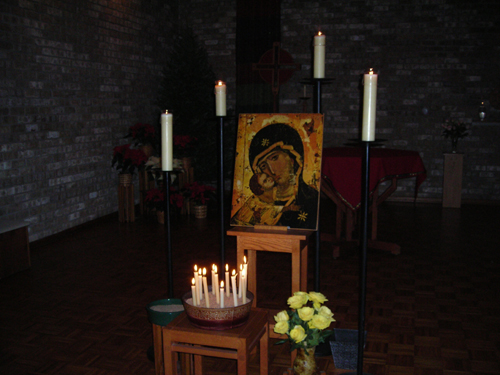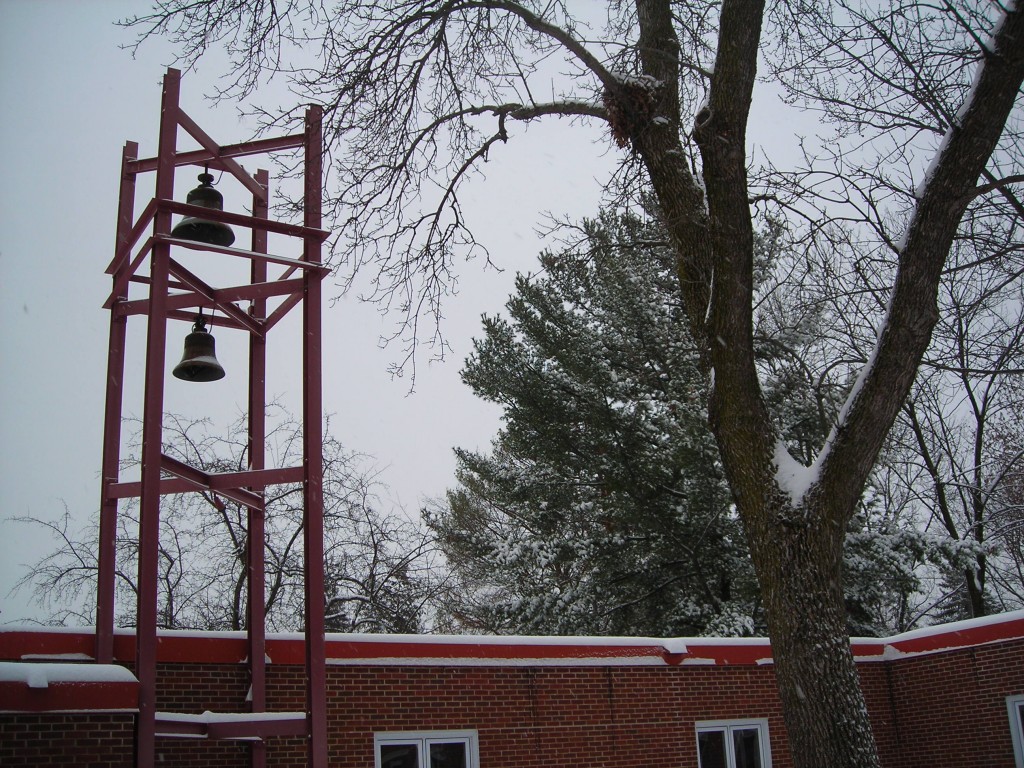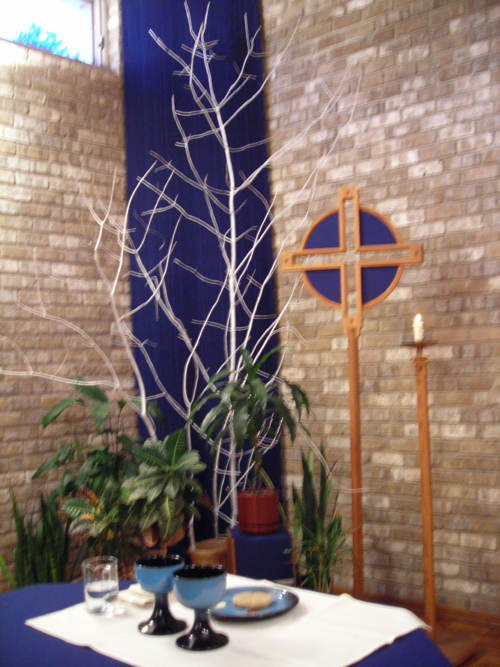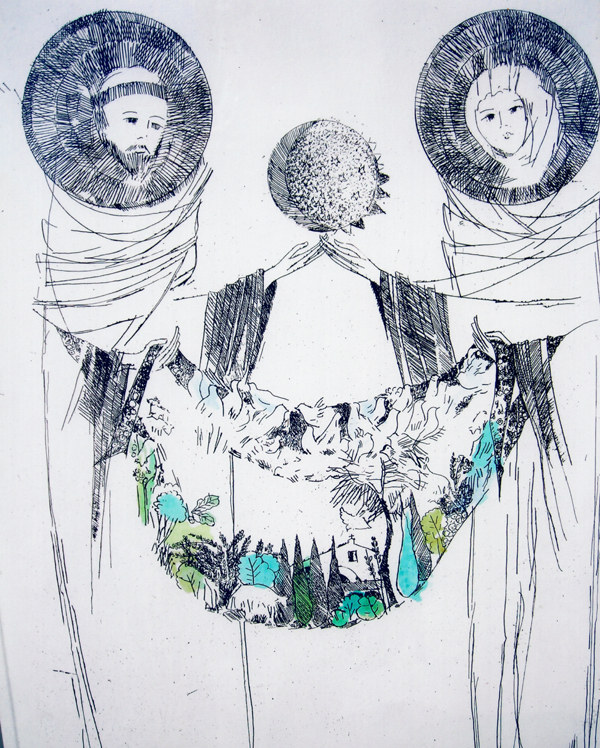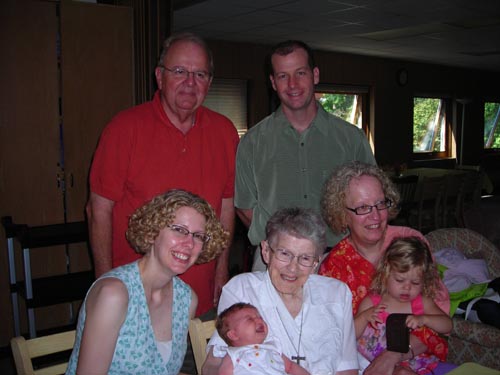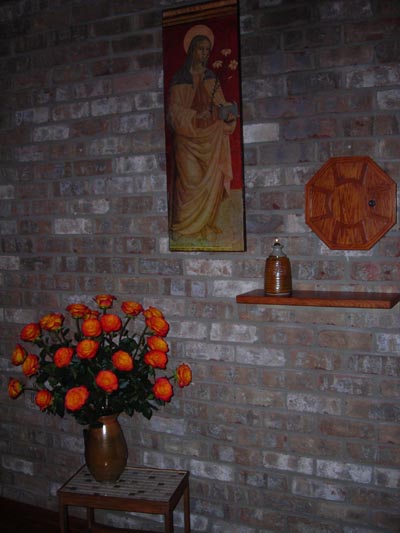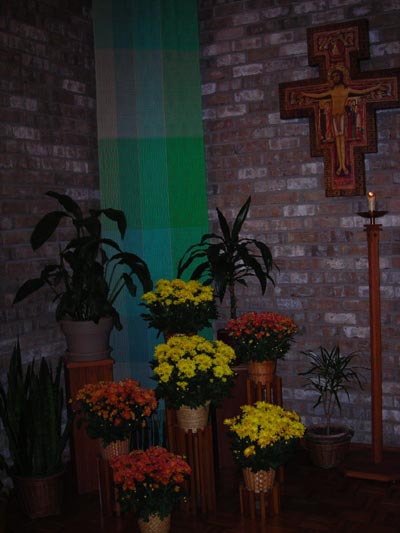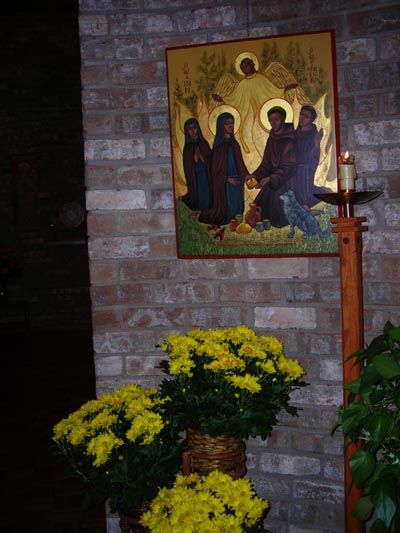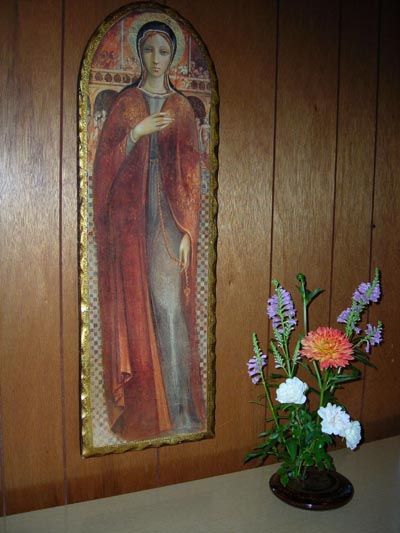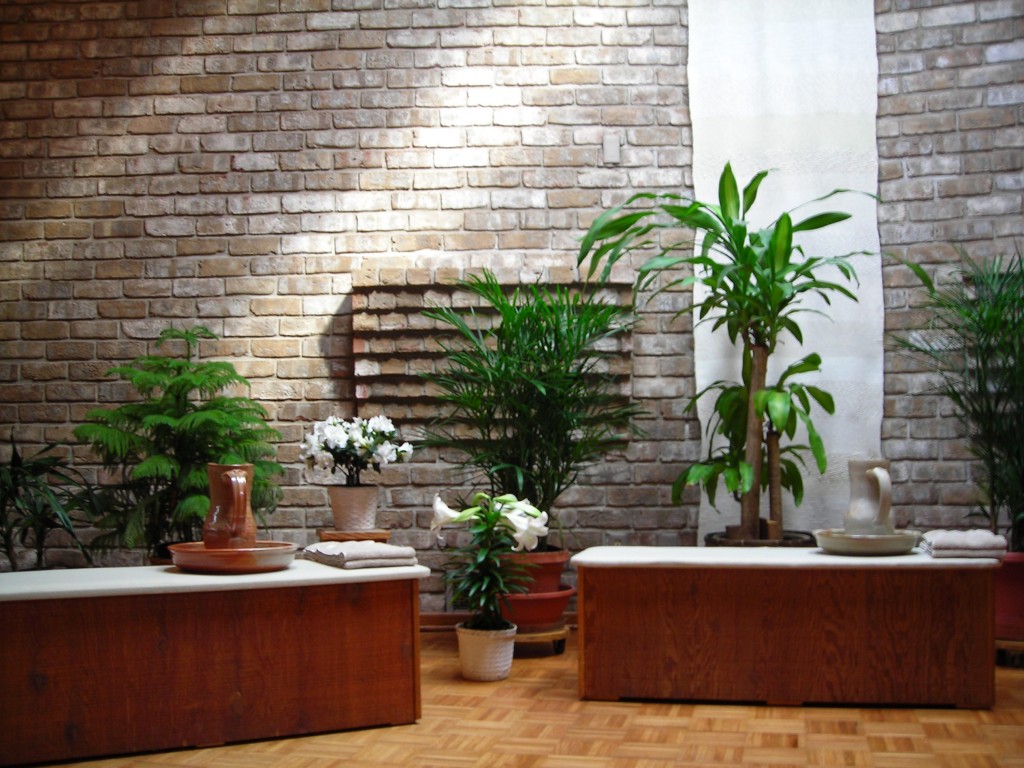Archive for the ‘Celebrations’ Category
Our Lady of Vladimir led us into the New Year.
Our Lady of Vladimir led us into the New Year.
You were all included in our prayer last evening as we brought the year, 2011, to a close. You were with us in silence, in song and in chanting. As our Sister Clare of Assisi urges us, let us go forth now in peace entering into this new year, each one of us blest by the Lord, the good guide who has created us, sustains and will be faithful throughout this New Year of 2012. Your Sisters
Those dear bells…
How dear those bells whose voices
tell the Savior’s birth!
Let our hearts sing as well
to praise His coming to our needy earth.
With our Christmas greetings and prayer,
your Poor Clare Sisters
The Story of the Bells
What is it about the sound of bells, particularly Church bells, that is so intriguing? Bells are a communal experience. They invade public auditory space shared with horns and sirens and birds. Each has a parcel of sounds communicating a public message to the world at large. These communitarian sounds call for a response, as did the town crier in days gone by.
Bells are not only outside ourselves but seem to resonate within, awakening a place of longing, a remembered feeling, the home of our soul. They call us to reflection, and reception of a personal inner message that strikes our hearts with fear or sadness or a tingle of hope. Bells ringing in a neighborhood evoke the question, “What are those bells?”
We came to this south Minneapolis neighborhood in 1954. The bells arrived 11 years later, a gift of the Pendergast family. They were blessed and baptized by Bishop Cowley, associate Bishop of the Archdiocese of Minneapolis/St. Paul. Named for the donors, Raymond, the larger bell has a diameter of 29 ¾ “, weighs 583 lbs and strikes the musical tone “C.” Pauline’s diameter is 23 ¾”, weighs 290 pounds and sounds the “E” tone.
Our bells here at the monastery ring seven times a day, each time sounding a call to prayer. The longer ring remind us of the prayer of the Angel announcing the Incarnation of Christ, the shorter ring calls us to the Liturgy of the Hours prayed 5 times a day here at the monastery, and by individuals and communities throughout the world. Most neighbors like to hear the bells except at 6:00 in the early morning. That early ringing was terminated within the first week of the installation of our bells.
This Advent/Christmas season, when you hear the bells, remember they ring for you, with our promise of prayer now and in the coming year.
your Sisters of St. Clare
Some thoughts about the Franciscans
Marisa Picelli is the author of this drawing of Clare and Francis with the animals and birds at the church of San Damiano. I think of Clare and Francis as a type of Adam and Eve, and the animals and birds as representing all of creation. In the center is a symbol of the Trinity: the Sun giving light to the Moon, and the Stars radiating throughout the universe. This beautiful image was brought to us from the Gallery of the Song of San Damiano in Assisi.
Clare and global ecology
Clare and Francis of Assisi and the lesser brothers and poor sisters can never be separated from God’s holy people. As we look back in time to 13th century Assisi, we see a creative energy and lightsomeness moving among God’s people. This was not just in Italy but west to the British Isles and to the east, to the countries of the Levant.
Eight hundred years later there was another moment of light and energy.
How can we explain to young people today what happened in the Sixties? There was a global movement among the young people of the world. Part of that global movement was a Christian enlightenment, a high point being the Vatican II Ecumenical Council.
Both the Franciscans of the 13th century and Christians at the time of the Vatican Council looked to the first Christian era and the Scriptures containing the stories of Jesus of Nazareth and the activities of the first Christians. When reading the Christian Scriptures they realized that what Jesus read and prayed in Synagogue were the Hebrew Scriptures. The prayer of the Our Father was in the Aramaic.
My point here is that globalization and ecology are not simply a study of matter, but also include the spiritual history of our planet and truly of the cosmos. We need to look at moments of spiritual enthusiasm that contribute to the passionate research of the spiritual dimension of humanity and all created matter, matter and spirit together. Teihard de Charden is a modern example of a person who lived and taught this double endeavor. We need both scientfic research and living expressions of spiritual traditions.
In what sense then can Clare of Assisi contribute to Ecology? “Eco,” oikos comes from the Greek meaning “house.” And of course, logy is the “study of.” House is a meaning- laden term. Open a good dictionary and you will find how broad and inclusive is the concept of “a house.”
In October, 2009, working with Dr. Jean Moleski-Poz and Friar William Short, OFM in preparation for the first Clarian retreat at the Franciscan Center, San Juan Bautista, CA, the theme that emerged immediately without any hesitation on the part of the four of us so engaged in the retreat preparation was: “The House of Clare.”
In 1212 Frances and the brothers welcomed Clare and her sisters to San Damiano. The charism of the Franciscan family was born. In 1224 at San Damiano, suffering from a disease of the eyes, Francis composed the “Canticle of the Creatures: Praise to you, Brother Sun…Sister Moon and all the creatures…” Francis, who never had blood sisters, learned what it was to have a sister from Clare. We all need one another. We are all inter connected, both materially and spiritually. Is that not we learn from ecology?
Those of you who know the early writings and traditions of the Franciscans are aware of the focus of the early brothers and sisters on poverty. Strange? Maybe not. According to the tradition Clare fought for the “privilege” of living in community without dowries, and income generating property. The Clares were not independently weathy. The key word is “independent.” They needed the friars and God’s people. Their world was deliciously interdependent.
Beth Lynn, OSC
A VISIT FROM AFAR
A VISIT FROM AFAR
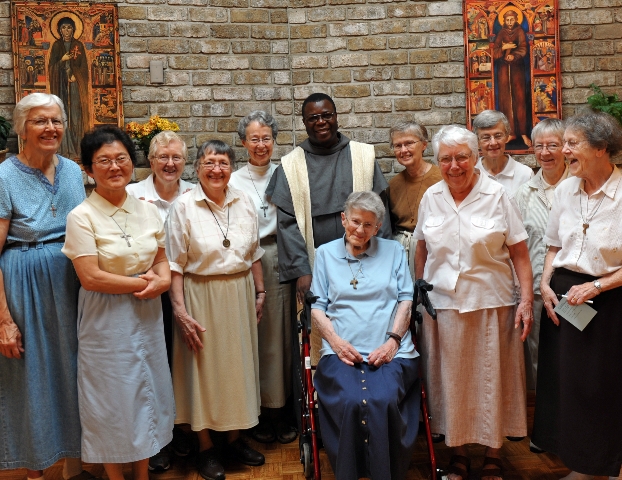 Father Patrick Chisanga, OFM, Conv. visits us from Zambia. He is the newly elected minister of the Zambian Province of the African Martyrs.
Father Patrick Chisanga, OFM, Conv. visits us from Zambia. He is the newly elected minister of the Zambian Province of the African Martyrs.
Eucharist on Saturday morning, August 27, 2011.
Good morning, friends,
Please note the change of time for Eucharist on Saturday, August 27, 2011. Fr. Kevin McDonough will preside at 7:30 am.
We hope that you can join us.
Your Sisters at St. Clare’s
You are all invited!
It is the feast of St Clare of Assisi, friend of Francis and of all the brothers and sisters who love the Lord and follow the Gospel of Jesus. You are invited to join us for the celebration.
We begin with the Office of Vespers at 5:00 PM August 10.
At 7:30 PM we celebrate the Transitus of Clare, a special para-liturgy remembering the life and death of Clare, and her special presence with us today.
Lauds is at 8 AM and the Eucharist at 9 AM, followed by refreshments and conversation in our hospitality area.
Easter, 2011
Easter, 2011
The story began in a garden, the garden of Eden. The story continues in the garden of Gethsemane, and up the hill of Calvary and down to the garden of the Resurrection. The garden is a place of encounters, for unexpected meetings. In the Scripture Readings of the Lenten/Easter Season we move through garden settings where God meets God’s people. In each chapter of the story we are invited to step into the setting, find our place, and engage our hearts with our own contribution to the story.
This Easter card pictures the garden setting at the back of our chapel. Before the Lord’s Passion there was the Passover meal, a familial gathering at which Jesus introduced the great sacrament of the washing of feet. “If I do not wash your feet you will have no part with me…as I have done so must you do.” (John 13)
Here at the monastery on Holy Thursday we have three stations at the back of the Chapel, with three pottery pitchers and bowls, each with a stack of towels nearby. Everyone is encouraged to wash another’s feet and to have his or her feet washed in return. The accompanying songs reflect Christ’s love for us and our love for one another. In that love we pray with you,
Christ is Risen!
Easter light fills the world as Christ’s presence is revealed
in love, service and compassion.
Your Sisters of St. Clare
www.stclaresrochester.org
